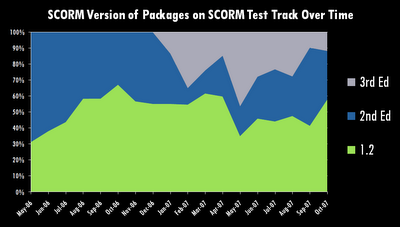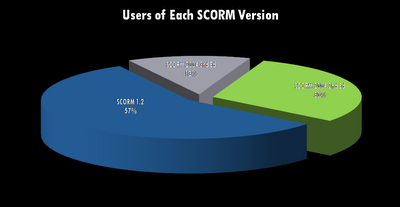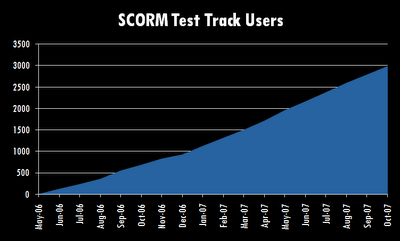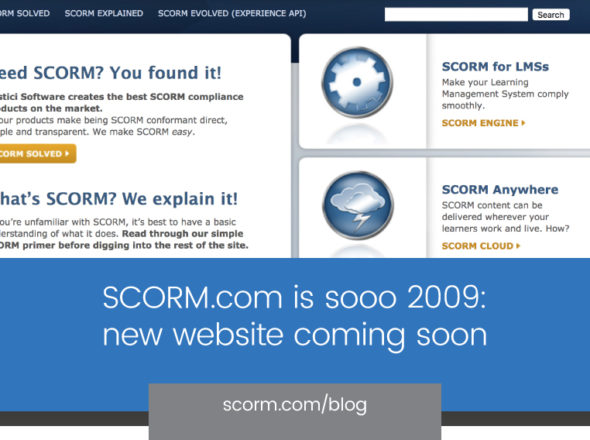Back in 2007, I got curious about SCORM 2004 adoption and pulled some metrics about how people were using SCORM. Well, I got curious again, but this time I took it to the next level. We’ve just published a feed of SCORM Stats that will be updated nightly. For SCORM geeks like us, these stats present a useful snapshot into how the real work is using SCORM. Go ahead and bookmark it and come back every now and then to see how things evolve.
Let’s take a look at SCORM then and now.
SCORM Versions

SCORM Versions Then

SCORM Versions Now
Then: SCORM 2004 made up about 50% of the content that was being uploaded into Test Track.
Now: SCORM 2004 makes up about 30-35% of the content uploaded into SCORM Cloud.
Conclusion: SCORM 2004 remains relevant for a significant population, but it’s adoption and usage has not increased over the years. Adoption appears to be flat. The decrease since 2007 is probably related to the more mainstream adoption of SCORM Cloud vs the early adopters using SCORM Test Track in 2007.
SCORM Versions By User

SCORM Versions By User Then

SCORM Versions By User Now
Then: About 40% of users were uploading SCORM 2004 content.
Now: About 40% of users are uploading SCORM 2004 content.
Conclusion: SCORM 2004 adoption remains flat.
Users

SCORM Test Track Users Then

SCORM Cloud Users Now
Then: About 3000 people cared enough about SCORM to try out our little application.
Now: 21,000 people have given SCORM Cloud a whirl.
Conclusion: Our little SCORM Test Track experiment was a hit. That’s nice for us, but for the broader SCORM community it show just how widespread SCORM’s adoption is. Twenty-one THOUSAND people are deep enough into SCORM to use an application like SCORM Cloud, with 500 more signing up every month. SCORM’s adoption is broader than I think anybody realizes. It is the industry workhorse.
Some other stats in that vein:
About 20,000 unique visitors visit scorm.com every month…that’s 20,000 more people every month who are interested in SCORM enough to go read about it.
About 12,000 courses are imported into SCORM Cloud every month. Twelve thousand courses, that is a lot of SCORM content being tested!
Realizing the -ilities (multiple SCOs)?

Then: Use of Multi-SCO content

Now: The use of multi-SCO content

Now: Number of SCOs in Courses
Then: About 35% of SCORM 2004 content took advantage of multiple-SCO functionality.
Now: The percentage of content using more than one SCO has increased dramatically with each new edition of SCORM 2004.
Conclusion: The improvements in each SCORM 2004 Edition have been useful in making sequencing easier to use and more effective. Or, conversely, the people who use sequencing most heavily tend to gravitate to the latest edition with the most robust functionality.
Realizing the -ilities (use of sequencing)?


Now: Use of Sequencing
Conclusion: The use of sequencing remains similar, but it increases with the later SCORM 2004 Editions….consistent with the conclusions above.


